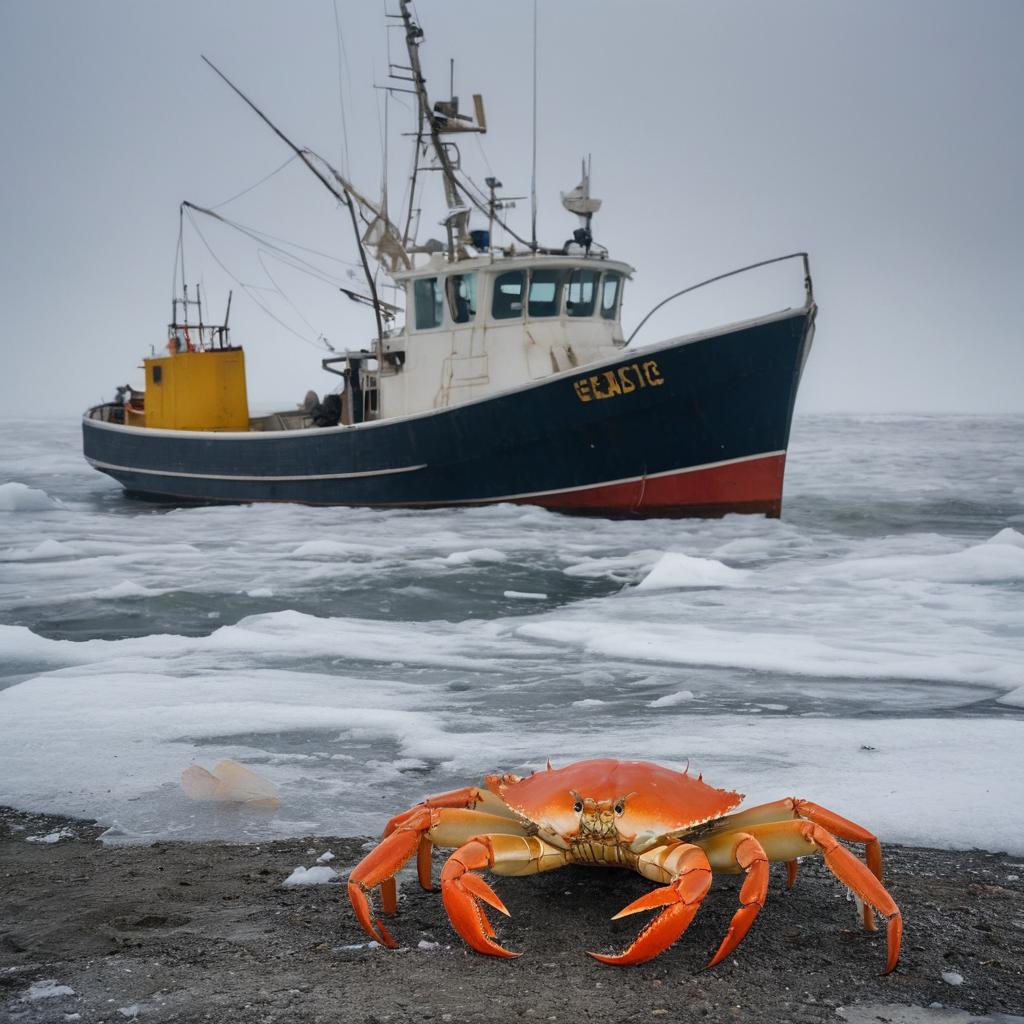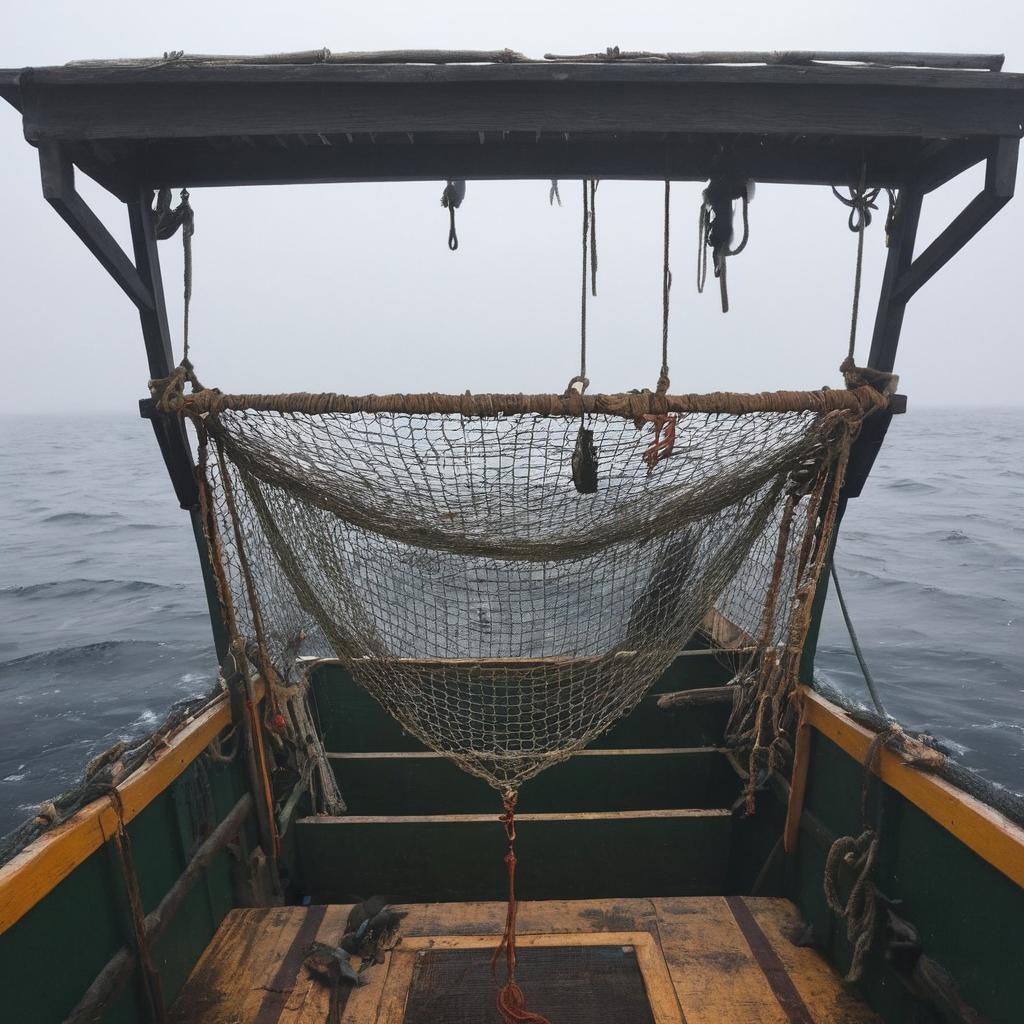
Warmer Waters Caused by Climate Change Wipe Out Snow Crab Populations Worth Up to $227 Million a Year
In a shocking study released by the National Oceanic and Atmospheric Administration (NOAA), scientists have discovered that billions of crabs have vanished from the Bering Sea near Alaska due to warmer waters caused by climate change. The research reveals that parts of the Bering Sea are becoming less Arctic, with warmer conditions occurring 200 times more frequently than before humans began burning fossil fuels.
The study, led by Michael Litzow, notes that snow crabs, a commercially valuable species worth up to $227 million a year, are struggling to adapt to the changing environment. The crabs’ metabolism has increased due to warmer waters, but there is not enough food to sustain them, leading to mass starvation. This phenomenon is not limited to snow crabs alone; other marine species such as red king crab and sea lions are also affected by the warming waters.
The decline of the Alaskan snow crab signals a wider ecosystem change in the Arctic, with oceans warming and sea ice disappearing. Experts warn that this transition will lead to new challenges for fisheries science and management, including the introduction of invasive species that threaten native populations. The Arctic region has warmed four times faster than the rest of the planet, with scientists predicting more devastating events in the future.
“We are witnessing a collapse of the snow crab population on an unprecedented scale,” said Litzow. “This is not just a local problem; it’s a symptom of a much larger issue – climate change is having far-reaching impacts on the Bering Sea ecosystem.”
The study highlights the urgent need for action to mitigate the effects of climate change on the Arctic region. As warmer waters continue to affect marine life, experts warn that more devastating events are likely to occur in the future.
A Tipping Point Reached
The research suggests that the Bering Sea has reached a tipping point, where the cumulative effects of climate change have pushed the ecosystem beyond its limits. The snow crab collapse is not an isolated incident; it’s part of a larger trend of ocean warming and sea ice melting.
“This is a wake-up call for policymakers and fisheries managers,” said Litzow. “We need to take immediate action to address the root causes of climate change and develop strategies for managing fisheries in a changing environment.”
A New Era for Fisheries Science
The study marks a turning point in fisheries science, as researchers begin to grapple with the far-reaching impacts of climate change on marine ecosystems. The decline of the Alaskan snow crab population highlights the need for more robust management practices that take into account the effects of climate change.
Fisheries managers and scientists will need to work together to develop new strategies for managing fisheries in a changing environment. This may involve implementing more adaptive management practices, such as setting catch limits based on seasonal fluctuations in fish populations.

The Alaskan snow crab fishery was once one of the most lucrative industries in the state, with fishermen hauling in millions of pounds of the prized crustacean each year. But today, that industry is on life support. The disappearance of billions of snow crabs from the Bering Sea has left scientists and policymakers scrambling to find a solution.

The decline of Alaskan snow crab populations raises concerns about global food security. The Bering Sea is home to some of the most valuable fisheries in the world, providing a significant source of protein for millions of people.
A Global Warning
The collapse of the Alaskan snow crab population is not an isolated incident; it’s part of a larger trend of ocean warming and sea ice melting. The Arctic region has warmed four times faster than the rest of the planet, with scientists predicting more devastating events in the future.
As climate change continues to affect the Arctic region, experts warn that more devastating events are likely to occur in the future. Fishery managers and scientists will need to work together to adapt to these changes and develop strategies for managing fisheries in a changing environment.
A Call to Action
The study highlights the urgent need for action to mitigate the effects of climate change on the Arctic region. As warmer waters continue to affect marine life, experts warn that more devastating events are likely to occur in the future.
Policymakers and fisheries managers must take immediate action to address the root causes of climate change and develop strategies for managing fisheries in a changing environment. This may involve implementing more adaptive management practices, such as setting catch limits based on seasonal fluctuations in fish populations.
The collapse of the Alaskan snow crab population is a stark reminder of the far-reaching impacts of climate change on marine ecosystems. It’s time to take action and address the root causes of this crisis before it’s too late.
CONCLUSION
In conclusion, the study highlights the urgent need for action to mitigate the effects of climate change on the Arctic region. The collapse of the Alaskan snow crab population is a stark reminder of the far-reaching impacts of climate change on marine ecosystems. It’s time to take action and address the root causes of this crisis before it’s too late.
The future of fisheries in the Bering Sea hangs in the balance, and it’s up to policymakers and fisheries managers to develop strategies for managing fisheries in a changing environment. The clock is ticking, and it’s time to act.







The vanishing snow crab populations in Alaska’s Bering Sea serve as a poignant reminder of the far-reaching consequences of climate change. As the study by NOAA so aptly demonstrates, warmer waters caused by human activities have pushed the ecosystem beyond its limits, leading to an unprecedented collapse of the snow crab population.
As someone who has dedicated their career to understanding the intricacies of marine ecosystems, I am compelled to emphasize that this is not merely a local issue but rather a symptom of a larger crisis. The Arctic region has warmed at an alarming rate, four times faster than the rest of the planet, and scientists predict more devastating events are on the horizon.
This collapse highlights the urgent need for immediate action to mitigate the effects of climate change on the Arctic region. It’s time for policymakers and fisheries managers to take decisive steps in addressing the root causes of this crisis before it’s too late.
In my professional experience as a marine biologist, I have seen firsthand the devastating impact of warmer waters on marine ecosystems. The snow crab collapse serves as a stark reminder that our actions have consequences, not just locally but globally.
To those who are concerned about the future of fisheries in the Bering Sea, I offer this advice: it’s essential to adopt more adaptive management practices that account for seasonal fluctuations in fish populations. This may involve setting catch limits based on real-time data and implementing more robust conservation measures to protect vulnerable species.
The clock is ticking, and it’s time for action. The future of fisheries in the Bering Sea hangs in the balance, and it’s up to us to ensure that we preserve these valuable resources for generations to come.
As I reflect on the vanishing snow crab populations, I am reminded of a quote by Rachel Carson: “In nature, nothing exists alone.” The interconnectedness of our ecosystems underscores the importance of taking immediate action to address the far-reaching impacts of climate change. Let us work together to safeguard the future of marine ecosystems and preserve these invaluable resources for posterity.
We must take immediate action to mitigate the effects of climate change on the Arctic region, lest we risk irreparable damage to our planet’s precious ecosystems. The clock is ticking; it’s time to act.
I’m reading this article about the vanishing snow crab populations in Alaska due to warmer waters caused by climate change. It’s absolutely heartbreaking to see billions of crabs disappearing from the Bering Sea.
The fact that the Arctic region is warming four times faster than the rest of the planet is a stark reminder of the devastating impacts of climate change on marine ecosystems. I completely agree with Michael Litzow, the lead researcher, who says that this collapse of snow crab population is not just a local problem but a symptom of a much larger issue – climate change having far-reaching impacts on the Bering Sea ecosystem.
However, as someone who’s been working in fisheries management for years, I’d like to add some extra expertise. We need to take immediate action to address the root causes of climate change and develop strategies for managing fisheries in a changing environment. This may involve implementing more adaptive management practices, such as setting catch limits based on seasonal fluctuations in fish populations.
One thing that’s often overlooked is the importance of maintaining a diverse and resilient marine ecosystem. By protecting and restoring habitats like coral reefs and mangroves, we can help buffer against climate change impacts and ensure the long-term sustainability of fisheries.
I also want to emphasize the need for more research on the effects of climate change on marine species. We need to better understand how different species are responding to changes in their environment and develop strategies for conserving them.
In addition to these efforts, I think it’s essential to promote sustainable fishing practices that prioritize the health of fish populations and ecosystems over short-term economic gains. This may involve implementing catch limits, closing areas to fishing during certain times, or using more selective fishing gear.
The future of fisheries in the Bering Sea hangs in the balance, and it’s up to policymakers and fisheries managers to take immediate action to address the root causes of climate change and develop strategies for managing fisheries in a changing environment.